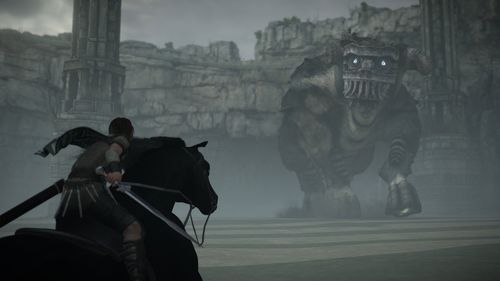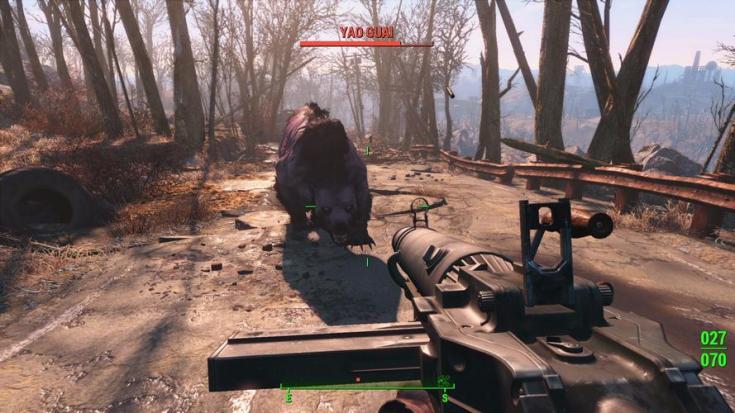1. Introduction
Today, with the rapid development of a series of emerging technologies such as big data, cloud computing, and communication technology, “artificial intelligence technology” has been born on these foundations. Artificial intelligence is the study of how machines can be trained to perform intellectual activities similar to or better than humans through complex models. It is a technical science that studies and develops theories, methods and techniques for simulating, extending and expanding human intelligence and applies them to a system [1]. It seeks to understand the nature of intelligence and produce a new kind of intelligent machine that can react in a similar way to human intelligence. It has good applications in machine vision, face recognition, palmprint recognition, game, automatic programming, intelligent control, robotics, genetic programming and so on.
Artificial intelligence is widely involved in the game field and has always played an important role in the game field. For example, it is used in a technique called “dynamic scripting”. It is unsupervised online learning in computer games that allows computer-controlled opponents to adapt to the gameplay of the game, thereby providing a mechanism to deal with the weaknesses of the game’s AI and respond to changes in the human player’s strategy [2]. It is fast, effective, and robust. In dynamic scripting, the adaptive rule base is used to dynamically generate intelligent opponents to achieve the effect of simulating real human interaction. As well as 3D visualization technology and basic game modeling technology, artificial intelligence is needed to help complete. 3D visualization has a more enhanced visual experience than traditional 2D, which can make the game experience more realistic for the player. Through the training of the model, artificial intelligence can randomly combine a two-dimensional layer and fault to create a new three-dimensional “world”.
This paper will introduce the application of artificial intelligence in the intelligence of opponents, game strategy, game story and plot, and game generation.
2. Intelligence of opponents
AI can be used to simulate opponents in the game with intelligent behavior. This can increase the challenge and realism of the game where the player can interact with AI opponents with different strategies and skills.
Enhanced opponent AI in games is a significant application of artificial intelligence (AI) that aims to simulate human players’ behaviors and decision-making processes, providing more challenging and realistic opponent characters in games. This technology utilizes intelligent algorithms and machine learning techniques to enable game opponents to adapt to player behavior and strategies and respond accordingly, increasing the competitiveness and playability of the games [3].
In the process of enhancing opponent AI in games, AI models need to possess the ability to observe and analyze player behaviors. By observing decisions, skill usage, tactical choices, and feedback from players, AI models extract patterns and features related to player behavior. This information is used to construct targeted response strategies for AI models, enabling game opponents to better interact with players.
One notable characteristic of enhanced opponent AI is the increased level of challenge it brings to games. AI opponents adjust their strategies and actions in real-time based on game rules and the actual performance of players. AI can also be used to increase the difficulty of the game. In fighting games, AI can control enemies to become the player’s opponents and is programmed to generate multiple difficulty levels to suit different players. In most games the AI generates incremental levels of game difficulty, also to attract the player’s interest in continuing to play. In matchmaking scenarios, player activity in the game is increased by creating intelligent opponents with abilities such as confrontation and teamwork.

Figure 1. Shadow of the Colossus game screen, where the character encounters powerful enemies [4].
In addition to increased challenge, enhanced opponent AI also enhances the realism of games. By simulating human players’ thought processes and decision-making, AI opponents behave more like human players. This improves the authenticity and immersion of player experiences by providing opponents with more realistic and credible behaviors. For instance, in the action-adventure game “Shadow of the Colossus,” AI opponents adjust tactics and actions based on player behavior and real-time intelligence, such as evading player attacks or finding effective opportunities to strike (Figure 1). Such AI-driven opponent behaviors add to the authenticity of the game, providing players with a truly immersive combat experience.
Furthermore, enhanced opponent AI exhibits adaptability. AI opponents dynamically adjust their strategies and actions based on players’ skill levels and abilities. This ensures that games offer suitable difficulty levels for different players, enhancing the inclusivity of games. For example, In the game Rogue, the AI system ensures that maps and content items are randomly generated for each game, allowing players to play multiple times without having a repetitive experience.
However, there are also challenges and limitations to consider in enhanced opponent AI. Balancing the difficulty level is a critical issue in designing AI algorithms for opponents. The algorithms need to provide sufficient challenge without making opponents too strong or too difficult. Extensive testing and optimization are required to ensure that AI opponents maintain a balanced level of competitiveness against human players.
Additionally, AI opponents may lack emotions and intuition. While AI models can simulate human decision-making processes, they lack the emotional and intuitive aspects that real human players possess. This can sometimes result in AI opponents’ behaviors not matching those of human players. Nonetheless, ongoing advancements in AI technology aim to improve models to make them more closely resemble human behavior and decision-making.
3. Artificial intelligence in games strategy
AI can be used to develop game strategies and optimize how tasks are completed. For example, in real-time strategy games, AI can help players make the best decisions for complex battlefield situations.
When developing game strategies and optimizing task completion methods using artificial intelligence (AI), there are multiple methods and features to consider.
For game strategy development, AI can apply deep reinforcement learning and rule-based systems. Deep reinforcement learning utilizes deep neural networks and reinforcement learning algorithms to enable AI to learn complex tactics and strategies in games [5]. For example, in real-time strategy games, AI can learn how to control and command multiple units, devise tactics, and avoid enemy attacks. On the other hand, rule-based systems rely on manually designed rules by developers or rules generated through data-driven methods to formulate game strategies. For instance, in chess games, AI can determine chess moves based on following chess patterns and basic strategy rules.
For task completion optimization, AI can use path planning and resource management and allocation methods. Path planning utilizes graph theory algorithms and search algorithms to help AI find the optimal path for task completion, considering factors such as time and resources, to improve task execution efficiency. For example, in map exploration type games, AI can assist players in planning the shortest path to avoid obstacles and enemy interferences, thus completing tasks more quickly. In terms of resource management and allocation, AI develops the best resource management strategies based on task requirements and available resources [6]. In city-building games, for example, AI can intelligently allocate buildings and human resources according to different task demands and priorities to ensure smooth task execution.
Collaboration and cooperation are another important aspect of AI in games. By developing multi-agent systems, AI enables multiple agents to collaborate and cooperate with each other to achieve shared goals and complete tasks. This entails selecting appropriate strategies and decision-making to coordinate actions and achieve optimal results. In team-based combat games, AI team members can cooperate with each other, devise tactics, and execute tasks together.
These methods and features have been applied in game development. For example, in “StarCraft II,” AI improves its game level by continuously learning tactics and opponent strategies through deep reinforcement learning. Similarly, in chess games, AI can make optimal move decisions based on preset rules and considering different situations.

Figure 2. Player vs. enemy attack screen in Fallout 4 [7].
In “Fallout 4,” AI can assist players in planning the optimal exploration path based on task scenarios and player needs to collect resources and complete tasks. Similarly, in “SimCity,” AI can intelligently manage city resources, optimize task completion methods, and meet the needs of different residents (Figure 2).
In the “Call of Duty” series, AI teammates can collaborate with players to develop and execute tactics together, completing missions, and defeating enemies.
By leveraging AI to develop game strategies and optimize task completion methods, games can achieve higher levels of intelligence, challenge, and enjoyment. AI can provide players with more intelligent, efficient, and engaging gaming experiences through methods such as learning, planning, and cooperation. By combining multiple methods, AI development can enhance the quality of games and offer players a more immersive gaming experience.
4. Promoting the story and plot of the game
In the story and plot of the game, artificial intelligence helps to promote the story and plot of the game.
Firstly, AI can be used to create believable and engaging characters. Through deep learning models and natural language processing techniques, developers can train AI models to simulate the behavior, dialogue, and emotional reactions of different characters [8]. These models can make characters more individualistic and human-like, enhancing the emotional connection between players and characters. The models can respond to player choices and actions, driving the development of the story and providing players with a more interactive and customizable gaming experience.
Secondly, AI can help design diverse and rich storylines. Using generative models and reinforcement learning algorithms, AI can automatically generate tasks, plot developments, and side quests, providing players with more choices and decisions, thereby increasing the game’s playability. AI can dynamically adjust the progress of the story based on player behavior and preferences, ensuring smooth and expected interactions between the story and the players.
Additionally, AI can be applied to personalized story progression. By analyzing player gameplay data and behavior patterns, AI can identify player interests and preferences, providing customized story clues and events. This personalized story progression increases player engagement and involvement, making players feel that their decisions and actions in the game world have real impact.
Lastly, AI can be used to create dynamic and adaptive game worlds. Through simulating intelligent agents and virtual ecosystems, AI can give characters and environments in the game world autonomy and adaptability. For example, AI can simulate the behavior of city residents, allowing them to make autonomous decisions based on environmental changes and player intervention [9]. Such dynamic game worlds make players feel that the game world is more authentic, challenging, and diverse.
In the field of game generation, AI can be used to generate game content such as maps, quests or characters. Through machine learning and generative models, AI can create new gaming experiences, providing more game choices and possibilities.
In the field of game generation, artificial intelligence (AI) can be utilized to generate various game content such as maps, quests, characters, and items. By leveraging machine learning and generative models, AI can create novel and diverse game experiences, providing players with more choices and possibilities in their gaming journey.
One common approach is using Generative Adversarial Networks (GANs), which consist of a generator and a discriminator. The generator learns from existing game samples to generate new game content, while the discriminator is trained to evaluate the similarity between the generated content and real game content. Through iterative training, the generator improves the quality and diversity of the generated content. For example, in map generation, AI can generate game maps with different terrains, landscapes, and difficulty levels. By learning the styles and features of existing maps, AI can introduce innovative elements in the generated maps, making each map unique and providing players with a fresh experience.
In terms of quest generation, AI can create various types of quests and challenges for players. By learning the rules and objectives of existing quests, AI can generate new quests including combat, exploration, puzzle-solving, and more. This allows players to enjoy a wider range of gameplay experiences and tackle different types of quests.
When it comes to character generation, AI can learn different character behaviors and traits to generate new characters. These characters can possess unique personalities, skills, and goals, providing interactive experiences with the players and enriching the game narrative.
Additionally, AI can generate a variety of items and equipment, offering players more choices and enhancing the depth and customization of the game. In summary, AI’s application in game generation can create novel and diverse game content, offering players richer and more personalized gaming experiences. By using machine learning and generative models, AI can learn and mimic existing game content, generating fresh game elements and experiences to bring players more enjoyment and challenges.
5. Conclusion
This paper primarily focuses on the utilization of AI in the gaming industry, specifically in four areas: AI intelligence for opponents, game strategy development, game story and plot, and game content generation. By incorporating artificial intelligence, opponents in games can exhibit intelligent behavior, enhancing the challenge and realism for players. AI can also assist in creating and optimizing game strategies and task completion. Moreover, artificial intelligence contributes to enhancing the storyline and plot of games. The main discussion has been about the help and optimization done by artificial intelligence in the field of gaming. Artificial Intelligence has been used in gaming to attract the interest of the player and increase the challenge for the player by being intelligent about many aspects of the opponents to make the game more enjoyable.
In terms of game strategy, AI applications enable NPCs in the game to interact with the player and react in a timely manner. Optimize game missions for a more realistic player experience. Artificial intelligence can build more optimized game models. It can also take on roles in the game, conversing and interacting with the player to drive the story and plot of the game. This AI can respond accordingly to the player’s choices and behaviors, increasing the immersion and interactivity of the game. Artificial intelligence is also helpful for game generation, which can be used to generate game content such as maps, quests, or characters. Through machine learning and generative modeling, AI can create new gaming experiences that offer more gaming options and possibilities.
All in all, AI will make game development more efficient, simple, and convenient, reducing costs and risks, and increasing quality and scale. Through data collection, games will be enriched, increasing player interaction and engagement.
Authors Contribution
All the authors contributed equally and their names were listed in alphabetical order.



